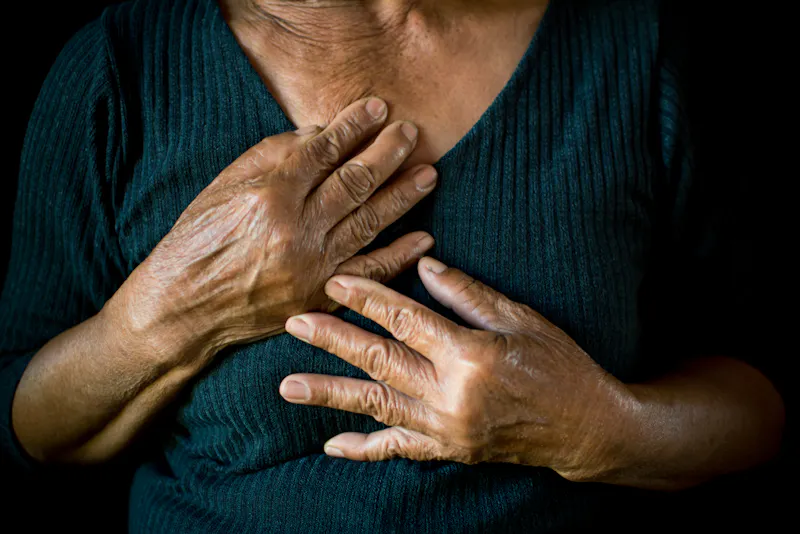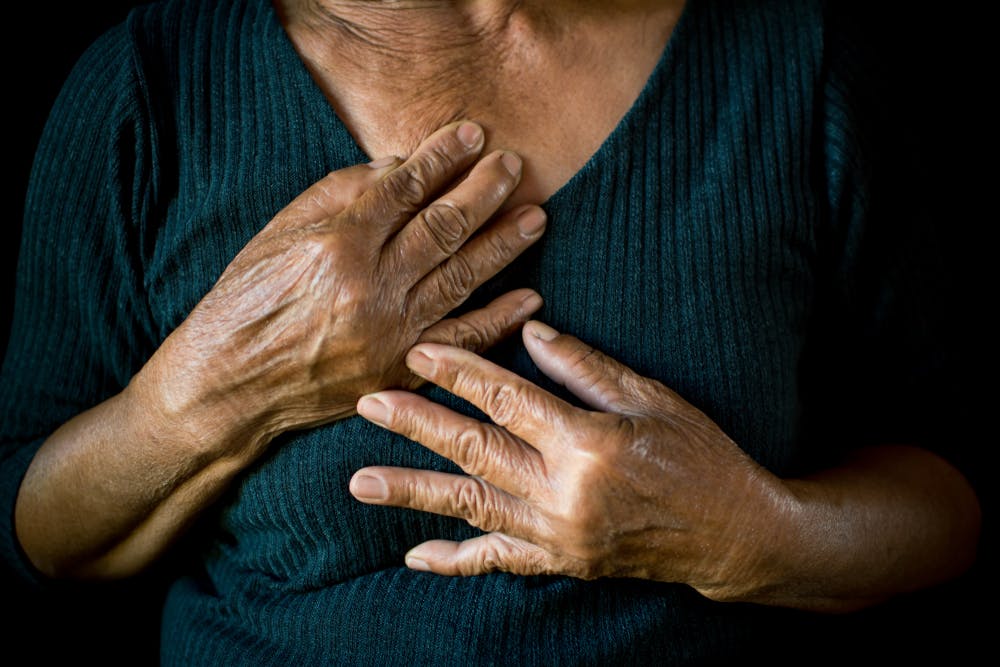Heart disease
What's covered?


There are several types of heart disease, the most common one is called coronary heart disease. This occurs when a build-up of fatty substances in the arteries forms around your heart, blocking blood flow and potentially leading to a heart attack. A balanced diet, exercise, and not smoking are all great ways to keep your heart healthy and reduce your risk of heart disease.
What is heart disease?
Heart disease is an umbrella term used to define several conditions that affect the heart. There are several types of heart disease, including:
- arrhythmia — when your heart doesn’t beat normally
- atherosclerosis — when your arteries become clogged with fatty substances and harden
- cardiomyopathy — when your heart muscle is damaged congenital heart disease — birth defects that affect your heart function
- heart infections — infections to the heart caused by bacteria, viruses, or parasites
- coronary heart disease (CHD) — the most common type of heart disease caused by the buildup of fatty substances in your heart’s arteries
What is coronary heart disease (CHD)?
The build-up of fatty substances (called atheroma) in your arteries is known as atherosclerosis. CHD is the term used to describe when atherosclerosis happens in the arteries around your heart (coronary arteries) — blocking the blood flow into your heart.
What are the symptoms of coronary heart disease?
There are three main symptoms for CHD:
- angina — a feeling of tightness or pain in your chest. This happens when little oxygen-rich blood reaches your heart, due to too much atherosclerosis.
- heart attack — if a piece of atheroma becomes dislodged from your coronary artery it can completely block the blood supply to your heart. This can permanently damage your heart and can cause a heart attack.
- heart failure — when your heart becomes too weak to fully function.

Causes and risk factors of CHD
There are several factors that can increase your risk of developing CHD:
Smoking
Studies show that smoking can increase your risk of getting CHD by 24%. This is because the nicotine and carbon monoxide in cigarettes put a strain on your heart by making it work harder. It also increases your risk of developing blood clots. Other substances in cigarettes can also damage and narrow your arteries.
High cholesterol
There’s a lot of evidence from many large clinical trials showing a clear link between high cholesterol and heart disease. You can check your cholesterol levels at home by using a cholesterol blood test.
Diabetes
Diabetes can cause the lining of your blood vessels to thicken and restrict blood flow — increasing your risk of CHD.
High blood pressure
High blood pressure can cause your heart to overwork. This strain might lead to CHD.
Lack of exercise
Being inactive can lead to weight gain. If you carry excess weight it can lead to high cholesterol and high blood pressure — increasing your risk of CHD.
How to test for CHD
If your doctor thinks you might be at risk of CHD, they will usually do a risk assessment for cardiovascular disease. This involves:
- asking about your medical and family history
- checking your blood pressure
- and a blood test to check your cholesterol.
If these tests indicate that you might have CHD, your doctor will do a series of follow up tests to confirm the diagnosis.
How to prevent CHD
If you have CHD or want to reduce your risk of developing it, there are lots of lifestyle changes that can help.
Eat a balanced diet
Aim to eat a diet full of fruit, vegetables, oily fish, nuts and seeds, and whole grains. Try to minimise your intake of salt (too much can lead to high blood pressure) and saturated fats (too many can increase cholesterol levels).
Exercise
Physical activity is a great way to maintain a healthy weight, which in turn lowers your chances of high blood pressure and cholesterol. Exercising regularly, at least twice a week, means you're twice as less likely to suffer from a heart attack.
Don’t smoke
Smoking significantly increases the chances of developing atherosclerosis.
Don’t drink too much alcohol
Try to not exceed 14 units of alcohol a week. Binge drinking also increases the risk of a heart attack. Find out more about how alcohol affects your body.
Keep diabetes under control
Diabetes increases your risk of CHD. . Being active and eating healthy are great ways of keeping your blood sugar levels in check. If you’re diabetic, reduce your risk by trying to keep your blood pressure below 130/80 mmHg.
Along with lifestyle changes, medication is sometimes used to help manage CHD.
If you’re worried about your heart or any other aspect of your wellbeing, it’s a good idea to get advice from a qualified health professional.
Additional information about your heart
What is your heart?
The heart is the muscle in your chest responsible for pumping blood around your body. It beats an average of 10,000 times a day and sends 5 litres of blood to all your muscles and organs through a network of arteries and blood vessels.
The structure of your heart
Your heart is made up of four chambers, two on the left and two on the right. The upper chambers are called atria and the two lower, larger chambers are called ventricles.
The right and left sides of your heart are separated by a thin muscular wall called the septum.
How does your heart work?
The two sides of your heart work together to pump blood around your body. The right side receives deoxygenated blood that’s just gone around your body. It then sends it through your lungs to pick up a fresh supply of oxygen and through to the left side of the heart, which then pumps it around your body.
The four chambers act like valves, opening and closing at the right time, ensuring the blood flows in the right direction.
As your blood exits the left side of the heart it goes through the aorta (the main artery leaving the heart) and then into the coronary arteries. They then divide off into smaller blood vessels and capillaries which reach all your muscles.
British Heart Foundation. Coronary heart disease (also known as Ischaemic Heart Disease). Retrieved 18 June 2019. https://www.bhf.org.uk/informationsupport/conditions/coronary-heart-disease
National Health Services (2017). Atherosclerosis. Retrieved 18 June 2019. https://www.nhs.uk/conditions/atherosclerosis/
National Health Services (2017). Causes: Coronary Heart Disease. Retrieved 18 June 2019. https://www.nhs.uk/conditions/coronary-heart-disease/causes/
National Health Services (2017). Overview: Coronary Heart Disease. Retrieved 18 June 2019. https://www.nhs.uk/conditions/coronary-heart-disease/
National Health Services (2017). Prevention: Coronary Heart Disease. Retrieved 18 June 2019. https://www.nhs.uk/conditions/coronary-heart-disease/prevention/
National Health Services (2017). Symptoms: Coronary Heart Disease. Retrieved 18 June 2019.https://www.nhs.uk/conditions/coronary-heart-disease/symptoms/